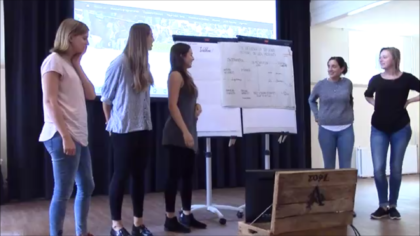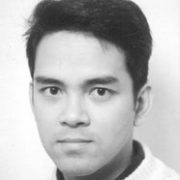How to harness the power of diversity within an international MA classroom?
Through bi-weekly posts, MA staff participating in the USO project on internationalisation will share concrete teaching tools and activities through which we aim to enhance ‘tailor-made’ internationalisation.
This week: lessons from the MA Conflict Studies and Human Rights (Humanities).
An international classroom does not automatically translate into competence in harnessing the power of diversity.
The MA Conflict Studies and Human Rights has always been noted for its highly diverse and international student community. Given the fact that the students we select for our programme are native or near-fluent English speakers, and already have substantial life experiences of having travelled extensively or even having worked in conflict areas, we simply assumed that they already possessed, or would naturally acquire, inter-cultural and/or international competences without need of further special instruction. To our surprise, however, when we quizzed them on this at a post-fieldwork session that we held on 4 July 2016, we discovered that despite their exposure to other cultures and social environments, many of our students were not able to articulate or reflect sufficiently on the inter-cultural and inter-communicational skills that they might have acquired and sharpened. It was not that they had learnt nothing; rather, the problem was that they did not know how to reflect upon and to capitalise on their encounters with diversity, both within the classroom and in the field.
Diversity awareness is what we want our university students and staff to learn.
We concluded that students (and also teaching staff) need to learn, in a conscious and systematic way, to be more reflective on their encounters with diversity, both within the classroom and in the research field. Do not take the international and multi-disciplinary classroom for granted. We realized that much more can be done to tap into and harness the richness and potential of diverse classrooms in order to enhance the degree of reflectiveness and introspection within university programmes.
The benefits of achieving greater diversity awareness are multitude. Diversity awareness enhances analytical creativity, respect for differences in one’s working environment, the ability to see different ways to look at a problem or issue, and promotes a more nuanced understanding of both the larger complex world around us, and of the specific academic work that we do. But how to go about this? This is what we did.
How to foster Diversity Awareness through a Diversity Mapping & Mining exercise.
Informed by retrospective feedback from our alumni, we designed and launched in September 2016 a pilot activity with our graduate freshers, entitled ‘Diversity Mapping & Mining’ (see attachment), on our annual Introduction Day. Working in small groups, the purpose of the activity was to make students more conscious of the varied nature and degree of diversity among themselves, and then to reflect (through interactive discussion) upon the potential that the diverse perspectives, experiences, knowledge, academic backgrounds, and personal opinions within the group has for synergetic knowledge sharing and problem solving, for consciousness raising and inter-personal empathy.
In the attached documents are the “tools” that we developed for the purpose of facilitating the processes of “diversity mapping” and “diversity mining” the international classroom. In order to work with the diversity in an active way, we recognise that it is essential to map it and make it visible. Only when we have an overview of the classroom diversity (in terms of knowledge, skills and interests) can we proceed to use it more actively. For this reason we suggest the creation of a Profile Booklet– a booklet (or an Excel table) with a short, descriptive overview of each student’s academic background, prior experiences, skills, and interests (see attachment “Table for Profile Booklet,” below).
The second “tool” is the Diversity Mapping and Mining activity that we described above (see attachment “Diversity Mapping & Mining assigment). Students were invited to bring ideas and knowledge to the table about a specific topic and research question in accordance with prior disciplinary background, formal and informal training, and life experiences. They were also asked to reflect upon, and then to present, the features of difference and diversity in the other group members that they found most illuminating for how they viewed the topic, and why. Finally, each working group was asked to produce a short reflection paper on what individuals in the group felt they had learnt from the activity, how their ideas and thoughts might have changed during the session, and suggestions for future improvement of the exercise (see attachment “Results Summary Diversity Mining exercise”).

What is the value of mapping and mining the diversity that exists within an international and inter-disciplinary classroom?
The conscious ability to actuate capacities and skills to recognise the potential within diversity, to reflect critically, and then to act upon them for clearly specified objectives will benefit our students in various ways in the future:
* it will help them to distinguish themselves from other candidates on the important and ever-increasingly international job market;
* consciousness of the potential and power in recognizing diversity will present them with possibilities to enhance their analytical skills, mainly by increasing their ability to appreciate both similarities and differences in others;
* it will enable them to function more effectively outside of their comfort zones, in ways that are less ethnocentric and more culturally appropriate to their specific environment.
Formalising competences in Diversity Awareness.
We will formalise the process for systematically and consciously tapping into the enriching learning potentials that are presented within the diverse classroom by making an addition to our OER. This amendment states the following new learning outcome:
“After successful completion of the MA, students are able to participate in group work productively, to take the lead on occasion, and to preside over debates and discussions, in an international and culturally mixed group.”
We will use this achievement as an important step towards our application for an ECA Certificate for Quality in Internationalisation for our MA programme in Conflict Studies & Human Rights.
ATTACHMENTS
Diversity Mapping & Mining assignments-MA CSHR
Results Summary Diversity Mining Exercise–MA CSHR
 23 januari 2017
23 januari 2017 U moet ingelogd zijn om te reageren, gebruik het formulier aan de linkerkant om in te loggen met uw solis gegevens.


